From Church Leaders
[Source - Helen Van Koevering - 3 February 2015 and May 2015]
In February 2015, we received this Bulletin from Helen Van Koevering in the Diocese of Niassa about the floods in Zambesia. Subsequently (May 2015) we received a report from the Diocese of Niassa on their activities in the Emergency Response project.

Diocese do Niassa
Igreja Anglicana de África Austral
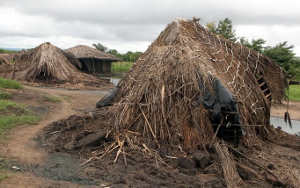
Though January is typically the wettest month of the rainy season, Northern and Central Mozambique have received exceptional levels of rainfall in 2015. Some areas received in 24 hours the same amount of rain that was projected for the whole month of January. Because of flooding, more than 30,000 families have been affected and nearly 40,000 ha of crops have been lost.
The Diocese of Niassa has focused its response in the following areas:
|
Number of villages | Number of households, total |
|---|---|---|
| Province of Zambezia, District of Morrumbala | 10 |
550 |
| Province of Zambezia, District of Milange | 10 |
500 |
| Province of Niassa, District of Mecanhelas | 10 |
900 |
| Total | 30 |
1950 |
Though the magnitude of our response does not match the scale of the disaster, we are working to faithfully respond where we can and how we can—using our strength in community mobilization and our ability to work effectively in very remote areas.
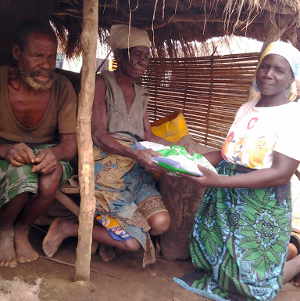
The Diocese of Niassa has worked through emergency response committees in 30 communities to identify the most vulnerable households among the thousands affected by these floods. We believe that this emergency response work should be managed as much as possible by the members of the affected communities, rather than people coming from outside. These volunteer committees, mobilized by our diocesan Mission Department, are composed of traditional authorities and representatives from the local government, representatives of all churches and mosques in the community, a Mother’s Union representative, and a youth representative. Ten of the communities in which we are working had pre-existing emergency response committees, which had received extensive training in years past and were already coordinating local responses before any of our clergy or staff members visited. Twenty committees were formed in the context of this disaster, and will receive more training in coming months about disaster preparedness and mitigation. These emergency response committees have been praised by government officials in various provinces—and, in some cases, government officials are encouraging similar committees even in areas where we are not working.
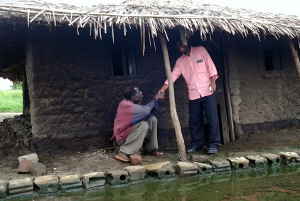
In choosing the most vulnerable households, these committees have prioritized households who are caring for sick or disabled people, who are caring for orphaned children, or who are have no able-bodied adults.
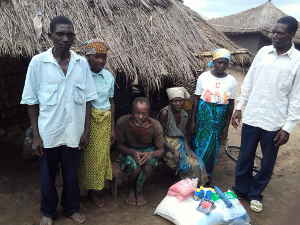
As an immediate response, families are receiving 45 kg of maize for consumption, soap, a mosquito net, and chlorine solution for water purification. While most of the products have been distributed, a few villages are still unreachable, except by helicopter, and have not yet received all of these products.
Families in Zambezia are also receiving a hoe, fast-growing maize seed, and kale and tomato seeds in order to replant a bit of their farms. Similar agricultural support will be provided in Mecanhelas as funding becomes available.
All work has been done in partnership with the local branches of the National Institute for Emergency Management, as well as other local government authorities.
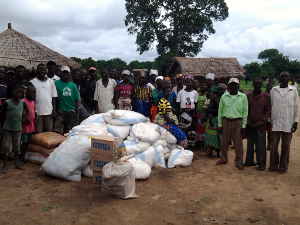
We will work with the Emergency Response Committees and the Local “Equipas de Vida” (“Teams of Life”) to enable communities to reduce their vulnerability to disasters, particularly through agricultural interventions.
Fields have become rivers and rivers lack bridges. Our team has travelled by lorry, canoe, motorbike, minibus, and foot to help transport materials from the places they are available to the people who need them. But these logistical challenges pale in comparison with the challenge of losing one’s home and—perhaps more significantly—losing ones farm, which holds the year’s sustenance.
To God be the glory, as we work together as friends and colleagues, as brothers and sisters in Christ.
3 February 2015
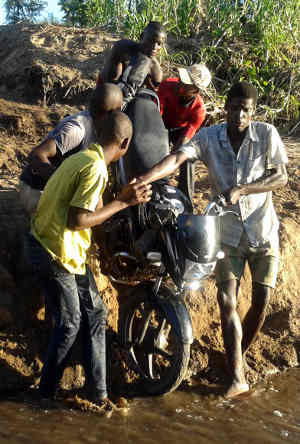
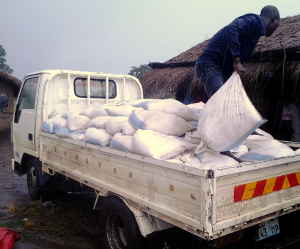
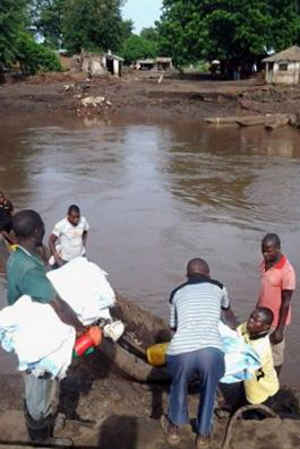
In May 2015 we received the “Report through the end of the Emergency Phase” (![]() 2918Kb) from the Diocese of Niassa, giving the details of the Project Activities, some Stories of Transformation, photographs from Mecanhelas, a discussion of challenges that occurred in the project, and some statistical appendices.
2918Kb) from the Diocese of Niassa, giving the details of the Project Activities, some Stories of Transformation, photographs from Mecanhelas, a discussion of challenges that occurred in the project, and some statistical appendices.